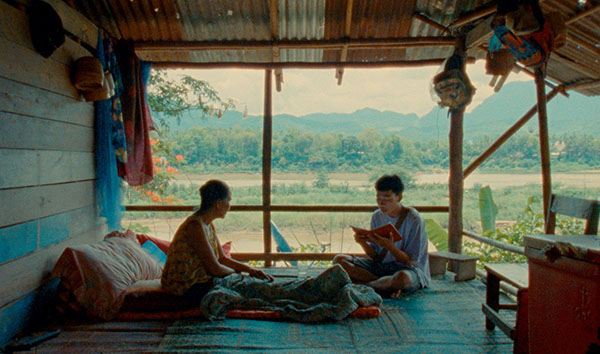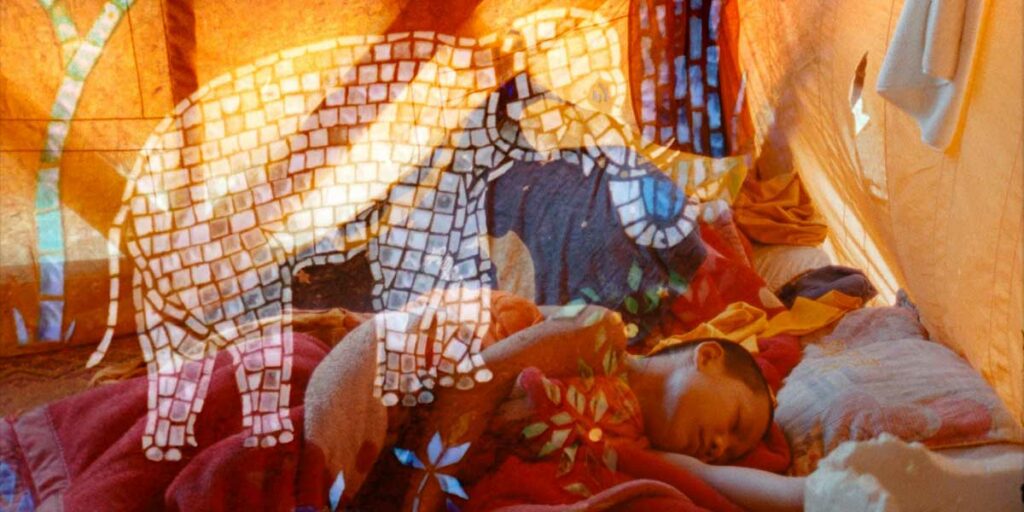Apichatpong Weerasethakul’s influence infuses deeply but delicately into Samsara, Lois Patiño’s lyrical and poetic Buddhism-focussed film.
After 2020’s Red Moon Tide, Lois Patiño returns to Berlin Film Festival with Samsara, and it is nothing short of a blinding success. Drawing inspiration from Apichatpong Weerasethakul’s well of spiritual slow cinema, Patiño’s evocative and investigative voice still manages to form into something singular. There is a welcome bravery to Samsara, an audaciousness which contributes to a spellbinding cinematic experience. Each section has its own merits, but its middle one will take you aback with its fearlessness. Patiño’s latest is like a tonic for the soul.
With its opening shot of young Buddhist monks in Laos, which consists of a single take and slow camera pan, you know instantly what sort of film Samsara will be. Scenes are never quite as long as those in Weerasethakul or Béla Tarr films, but Samsara has a similarly patient pacing. The first part guides us soothingly alongside the lives of these young monks, educating some viewers in the different forms of Buddhism and varying ethnic groups of Laos. Meanwhile, a boy living near the monastery spends time with the monks and reads an old Tibetan scripture to an elderly woman who is close to death. The absence of a driving narrative matters little when the atmosphere and introspection are as great as they are.
It is rare for a film to include viewers as much as Samsara does, but Patiño frequently invites us to partake in the monks’ experiences. He invites us to take quiet moments of reflection via long takes of nature, focussing on a sun-kissed vista or rippling water; at other times, we see the world from the viewpoint of the monks, as they look at objects such as a tree and imagine being in that organism’s position. Humans, animals, and the elements all seem to merge freely throughout Samsara. It makes us less a viewer and more a willing participant; Samsara’s second part takes this inclusion to the next level.

The less said the better, but this extended section may well be one of the most immersive experiences you’ll ever have in a cinema. A whirlwind of sounds and colours, flashing at varying paces, bombard the senses in the most exquisite way. When Samsara moves into its final section, you are likely to find yourselves viewing the world – now Zanzibar, Tanzania – with the same lyrical appreciation that Patiño has imbued on us previously. He quite literally changes our viewpoint of what we are seeing, utilising film form to its fullest potential.
In comparison to the earlier sections, this third part is slightly less absorbing, but the repeated themes of death, reincarnation, and religion allow them all to strongly connect to one another, more or less. The portrayal of Islam is given less depth than that of Buddhism, but Samsara is, first and foremost, a portrait of the world’s fifth biggest religion. A stunning visual style that utilises techniques such as superimposed images and heightened colours allow each part of Samsara to have its own creative depth. Patiño changes our outlook when viewing Samsara, and he may well do the same when we leave the darkened cinema screen and look at the real world around us, perspective anew.
Samsara premiered at the Berlin Film Festival on February 20-21, 2023 and was released in UK cinemas on January 26, 2024. Read our Berlin Film Festival reviews!

